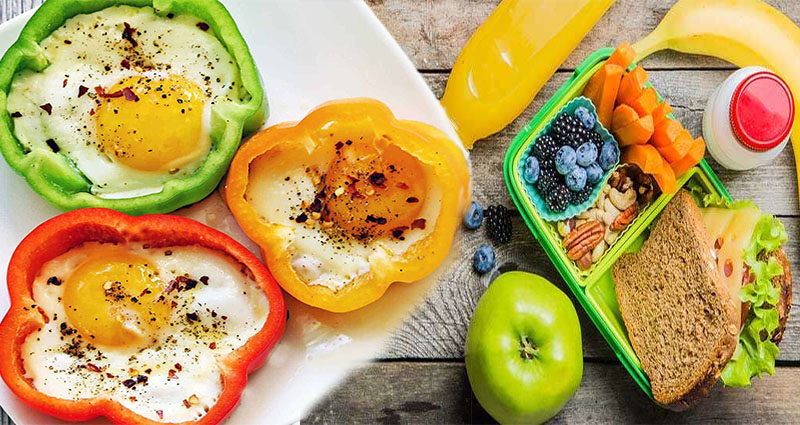The first step in providing healthy food for kids is to provide a variety of fruits and vegetables. While fruit juice is tempting, it should be avoided. If you do let your child drink fruit juice, make sure it is 100 percent juice with no added sugar and limit serving sizes. For fruit, look for canned products that are labeled “light” and are packed in their own juice. These fruits are naturally low in added sugar. Dried fruits count as a cup of fruit, so you should be careful not to feed your child excess dried fruits.
Fruits and vegies
They’re filled with dense nutrients, which can improve athletic performance and help build bones. They can also improve your child’s focus in the classroom. However, it’s hard to convince kids to eat their vegetables and fruits. Here are some tips to help get them to start eating fruits and vegetables:
Milk
Many people have the misconception that milk can make children fat. While this may be true for older children, the American Academy of Pediatricians recommends that babies consume full-fat milk. Even though milk has high levels of fat, this is necessary for their brain development. It is not recommended to give children skim or reduced-fat milk, as their bodies need a high percentage of fat in their diets. Milk has been shown to be a good food for kids, but it has a few drawbacks that must be considered before deciding if it’s right for your kids.
Eggs
There are a variety of ways to prepare eggs for children. For example, you can bake them, add them to cereal, or use them as a topping for a salad. Eggs are considered a superfood because they are packed with important vitamins, minerals, and amino acids. Kids can eat them with almost any meal, but they can benefit from eggs in moderation. Here are some recipes that will help your children love eggs!
Fish
The nutrients in fish are beneficial for the development of the child’s brain. Omega-3 fatty acids, which are present in a large number of fish, are particularly important for the development of a child’s brain. Moreover, fish contain a low amount of saturated fat and a high content of protein and vitamins. But beware! Although fatty fish are rich in important nutrients for the body, they can also contain harmful contaminants such as mercury, which is especially bad for your child’s brain and nervous system.
Whole grains
There are numerous benefits to whole grains for kids. For instance, they help reduce the risk of diabetes, obesity, and heart disease, and may also lower blood cholesterol. And, as a bonus, whole grains are rich in B vitamins, including folate, which helps prevent neural tube defects during pregnancy. Plus, they give your kids a boost of energy. So, they should be a part of your child’s diet!
Yogurt
Despite its creamy consistency, yogurt is one of the healthiest foods your kids can eat. A full-fat yogurt is a more satisfying treat than a low-fat one. This creamy food has four benefits for growing kids. Here are some reasons to give it a try:
Whole-milk yogurt
Yogurt is an excellent nutrient-dense food for kids. It is commonly made of cow’s milk and contains a wide variety of nutrients. Kids especially benefit from yogurt, because it is high in calcium, phosphorus, vitamin A, vitamin D, riboflavin, and vitamin B12, as well as magnesium, choline, and selenium. But before you introduce yogurt to your child, you should explain to him or her the benefits of yogurt.
Nuts and seeds
Aside from their high fibre content, nuts and seeds are also excellent sources of protein, antioxidants and vitamins. This makes them a great addition to a child’s diet. Nuts and seeds should be introduced in the form of nut butter or paste when they are very young, so that the little ones do not choke on them. Alternatively, parents can make pesto by mixing nuts with leafy greens and serving it with whole-grain pasta.
Vegetables
Most parents realize that vegetables are an important part of their kids’ diet. Besides providing essential vitamins and minerals, they also provide a wide range of textures. But there is a danger of over-inculcating your child with new tastes and textures. To minimize this risk, empower your child to make his or her own decisions and to eat vegetables without being forced to. This way, you can enjoy vegetables with your child while limiting guilt.
Fruit smoothies
Making a fruit smoothie with your kids is an excellent way to introduce them to healthy eating habits and have fun at the same time. They’ll enjoy picking out the ingredients and seeing them blend together. They might even guess what color they’ll have if they get a chance to see the colors change! Then, serve a piece of fruit alongside the smoothie to encourage them to eat it. In addition to fruit, they will also appreciate the nutritional benefits of the yogurt, banana, and fruit.











